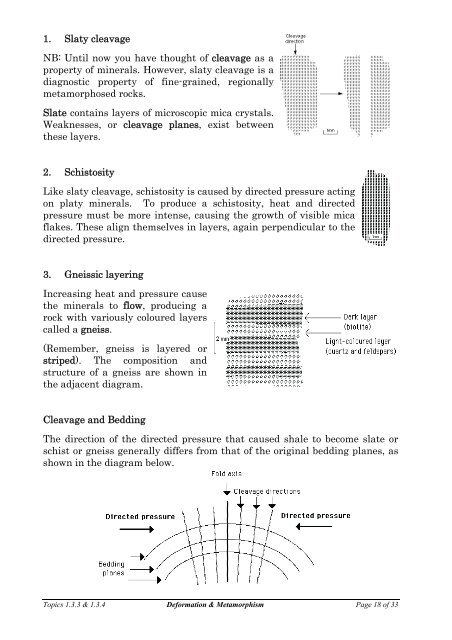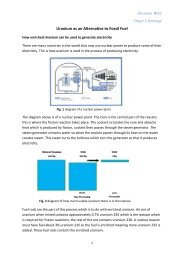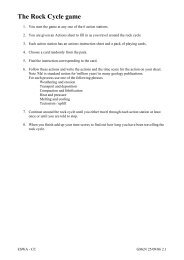Deformation and Metamorphism
Deformation and Metamorphism
Deformation and Metamorphism
Create successful ePaper yourself
Turn your PDF publications into a flip-book with our unique Google optimized e-Paper software.
1. Slaty cleavage<br />
NB: Until now you have thought of cleavage as a<br />
property of minerals. However, slaty cleavage is a<br />
diagnostic property of fine-grained, regionally<br />
metamorphosed rocks.<br />
Slate contains layers of microscopic mica crystals.<br />
Weaknesses, or cleavage planes, exist between<br />
these layers.<br />
2. Schistosity<br />
Like slaty cleavage, schistosity is caused by directed pressure acting<br />
on platy minerals. To produce a schistosity, heat <strong>and</strong> directed<br />
pressure must be more intense, causing the growth of visible mica<br />
flakes. These align themselves in layers, again perpendicular to the<br />
directed pressure.<br />
3. Gneissic layering<br />
Increasing heat <strong>and</strong> pressure cause<br />
the minerals to flow, producing a<br />
rock with variously coloured layers<br />
called a gneiss.<br />
(Remember, gneiss is layered or<br />
striped). The composition <strong>and</strong><br />
structure of a gneiss are shown in<br />
the adjacent diagram.<br />
Cleavage <strong>and</strong> Bedding<br />
The direction of the directed pressure that caused shale to become slate or<br />
schist or gneiss generally differs from that of the original bedding planes, as<br />
shown in the diagram below.<br />
Topics 1.3.3 & 1.3.4 <strong>Deformation</strong> & <strong>Metamorphism</strong> Page 18 of 33






